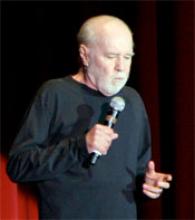Community Broadband Bits 8 - Jim Moorehead of Mendocino County, California

The eighth podcast in our Community Broadband Bits series is a discussion with Jim Moorehead, the Chair of the Executive Committee of the Broadband Alliance of Mendocino County in California. Mendocino is a large, rural county in the northern part of the state that has been left behind by major incumbent providers including AT&T, Comcast, and Verizon.
We talk about what steps they have taken to solve their problems and discuss the frustrating state of broadband mapping -- state and federal officials readily accept the dramatic exaggeration of incumbent footprints where broadband is available.
We want your feedback and suggestions for the show - please e-mail us or leave a comment below. Also, feel free to suggest other guests, topics, or questions you want us to address.
This show is 26 minutes long and can be played below on this page or subscribe via iTunes or via the tool of your choice using this feed. Search for us in iTunes and leave a positive comment!
Listen to previous episodes here. You can download this Mp3 file directly from here.
Read the transcript of this episode here.
Find more episodes in our podcast index.
Thanks to Fit and the Conniptions for the music, licensed using Creative Commons.



